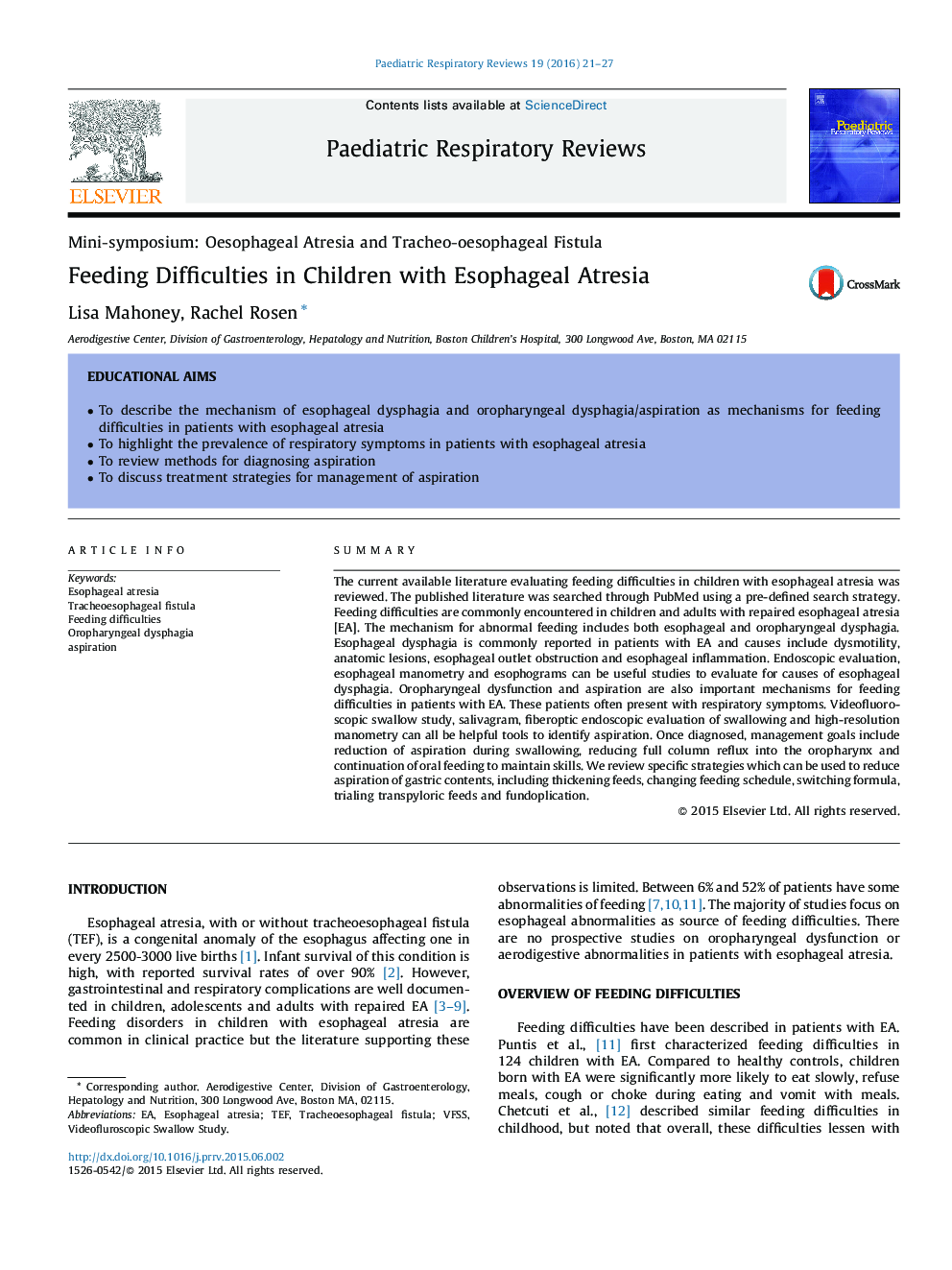| Article ID | Journal | Published Year | Pages | File Type |
|---|---|---|---|---|
| 4170685 | Paediatric Respiratory Reviews | 2016 | 7 Pages |
SummaryThe current available literature evaluating feeding difficulties in children with esophageal atresia was reviewed. The published literature was searched through PubMed using a pre-defined search strategy. Feeding difficulties are commonly encountered in children and adults with repaired esophageal atresia [EA]. The mechanism for abnormal feeding includes both esophageal and oropharyngeal dysphagia. Esophageal dysphagia is commonly reported in patients with EA and causes include dysmotility, anatomic lesions, esophageal outlet obstruction and esophageal inflammation. Endoscopic evaluation, esophageal manometry and esophograms can be useful studies to evaluate for causes of esophageal dysphagia. Oropharyngeal dysfunction and aspiration are also important mechanisms for feeding difficulties in patients with EA. These patients often present with respiratory symptoms. Videofluoroscopic swallow study, salivagram, fiberoptic endoscopic evaluation of swallowing and high-resolution manometry can all be helpful tools to identify aspiration. Once diagnosed, management goals include reduction of aspiration during swallowing, reducing full column reflux into the oropharynx and continuation of oral feeding to maintain skills. We review specific strategies which can be used to reduce aspiration of gastric contents, including thickening feeds, changing feeding schedule, switching formula, trialing transpyloric feeds and fundoplication.
